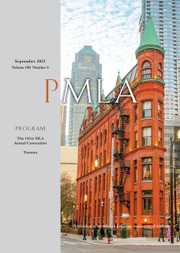No CrossRef data available.
Article contents
Rhythm as Form in Lawrence: “The Horse Dealer's Daughter”
Published online by Cambridge University Press: 01 December 2020
Abstract
D. H. Lawrence's art is not so loose as many critics have thought. Indeed, his most characteristic stories reveal a coherent form that rests on various rhythmic devices: repeated scenes, phrases, and characters. These may be called conventional rhythmic devices, but the form of these stories rests chiefly on Lawrence's unique rhythmic devices: the dynamic relations of attraction-repulsion between his characters and his expanding rhythmic imagery that enables him to reveal direct psychic experience. E. M. Forster's Aspects of the Novel and E. K. Brown's Rhythm in the Novel provide the theoretical background for the term, “rhythm,” but Lawrence's use of rhythm in fiction is only partly explained in these critics' terms. “The Horse Dealer's Daughter” is a perfect example of rhythmic form in Lawrence's work: the dynamic, to-and-fro rhythm between death and life, between the daily self controlled by the will and the essential self guided by desire, between the two lovers each separate and other who touch and draw apart, touch and draw apart. And all these rhythms are gradually transformed from the realistic to the psychic or unconscious world through repeated and expanding images of eyes, hands, waters.
- Type
- Research Article
- Information
- Copyright
- Copyright © Modern Language Association of America, 1972
References
1 Aspects of the Novel (New York: Harcourt, 1927), p. 240.
2 Forster, p. 239.
3 The Structure of the Novel (London: Hogarth Press, 1928), pp. 14–15.
4 Rhythm in the Novel (Toronto: Univ. of Toronto Press, 1950), p. 83.
5 Phoenix: The Posthumous Papers of D. H. Lawrence, ed. Edward McDonald (London: Heinemann, 1936), p. 67.
6 “A Propos of Lady Chatterley's Lover” in Sex, Literature, and Censorship, ed. Harry T. Moore (New York: Twayne, 1953), p. 109.
7 Phoenix, p. 313.
8 Phoenix, p. 539.
9 In The Complete Stories of D. H. Lawrence (London: Heinemann, 1965), n, 442. Subsequent references to this edition are in the text.
10 Phoenix, pp. 530–31.


